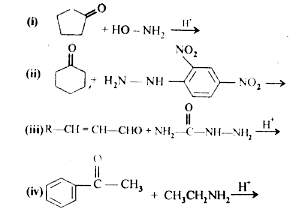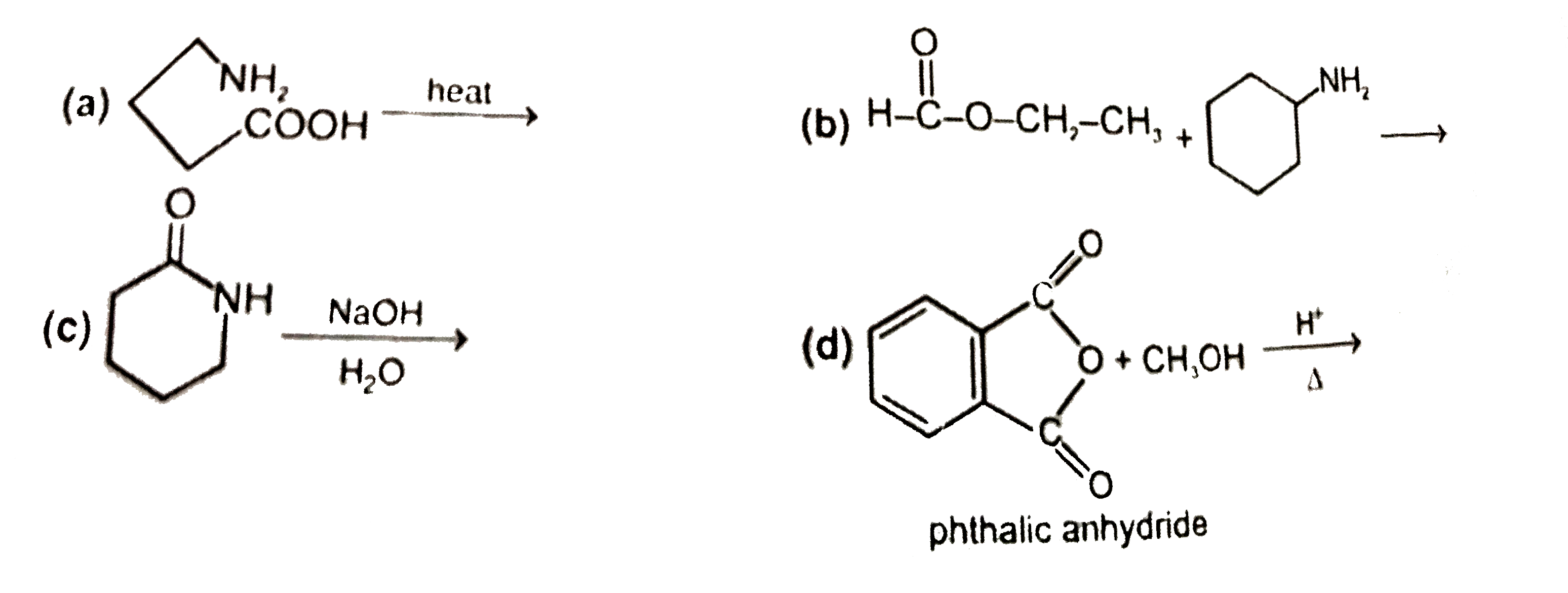Predict which of the following reactions would proceed spontaneously at 298K?
Co(s)+Fe2+(aq)→Co2+(aq)+Fe(s)
Ec−.Co2+/Co=−0.28V
Cd2+(aq)+Fe(s)→Cd(s)+Fe2+(aq)
Ec−.Cd2+/Cd=−0.4V
Cd(s)+Co2+(aq)→Cd2+(aq)+Co(s)
Ec−.Fe2+/Fe=−0.44V
Zn2+(aq)+H2→Zn(s)+2H⊕
Ec−.Zn2+/Zn=−0.76V
The correct Answer is:b,c
To determine which reactions proceed spontaneously at 298 K, we need to analyze the standard cell potentials (E°) for each reaction. A reaction is spontaneous if the cell potential (E°) is positive, which corresponds to a negative Gibbs free energy change (ΔG).
1. Identify the Reactions:
We have several reactions to analyze. For each reaction, we need to identify the oxidation and reduction half-reactions and their respective standard reduction potentials (E°).
2. Calculate E° for Each Reaction:
- Reaction A: Cobalt and Iron
- Cobalt is oxidized (E° = -0.28 V).
- Iron is reduced (E° = -0.44 V).
- E°cell = E°cathode - E°anode = (-0.44) - (-0.28) = -0.16 V (not spontaneous).
- Reaction B: Cadmium and Iron
- Cadmium is oxidized (E° = -0.44 V).
- Iron is reduced (E° = -0.40 V).
- E°cell = E°cathode - E°anode = (-0.40) - (-0.44) = 0.04 V (spontaneous).
- Reaction C: Cadmium and Cobalt
- Cadmium is oxidized (E° = -0.40 V).
- Cobalt is reduced (E° = -0.28 V).
- E°cell = E°cathode - E°anode = (-0.28) - (-0.40) = 0.12 V (spontaneous).
- Reaction D: Zinc and Hydrogen
- Zinc is reduced (E° = -0.76 V).
- Hydrogen is oxidized (E° = 0.00 V).
- E°cell = E°cathode - E°anode = (0.00) - (-0.76) = -0.76 V (not spontaneous).
3. Determine Spontaneity:
- From the calculations:
- Reaction A: E°cell = -0.16 V (not spontaneous)
- Reaction B: E°cell = 0.04 V (spontaneous)
- Reaction C: E°cell = 0.12 V (spontaneous)
- Reaction D: E°cell = -0.76 V (not spontaneous)
Conclusion:
The reactions that proceed spontaneously at 298 K are Reaction B and Reaction C.
We have several reactions to analyze. For each reaction, we need to identify the oxidation and reduction half-reactions and their respective standard reduction potentials (E°).
- Reaction A: Cobalt and Iron
- Cobalt is oxidized (E° = -0.28 V).
- Iron is reduced (E° = -0.44 V).
- E°cell = E°cathode - E°anode = (-0.44) - (-0.28) = -0.16 V (not spontaneous).
- Reaction B: Cadmium and Iron
- Cadmium is oxidized (E° = -0.44 V).
- Iron is reduced (E° = -0.40 V).
- E°cell = E°cathode - E°anode = (-0.40) - (-0.44) = 0.04 V (spontaneous).
- Reaction C: Cadmium and Cobalt
- Cadmium is oxidized (E° = -0.40 V).
- Cobalt is reduced (E° = -0.28 V).
- E°cell = E°cathode - E°anode = (-0.28) - (-0.40) = 0.12 V (spontaneous).
- Reaction D: Zinc and Hydrogen
- Zinc is reduced (E° = -0.76 V).
- Hydrogen is oxidized (E° = 0.00 V).
- E°cell = E°cathode - E°anode = (0.00) - (-0.76) = -0.76 V (not spontaneous).
- From the calculations:
- Reaction A: E°cell = -0.16 V (not spontaneous)
- Reaction B: E°cell = 0.04 V (spontaneous)
- Reaction C: E°cell = 0.12 V (spontaneous)
- Reaction D: E°cell = -0.76 V (not spontaneous)
The reactions that proceed spontaneously at 298 K are Reaction B and Reaction C.
Topper's Solved these Questions
- ELECTROCHEMISTRYBOOK - CENGAGE CHEMISTRY ENGLISHCHAPTER - ELECTROCHEMISTRYEXERCISE - Exercises Ingle Correct
178 Videos
- ELECTROCHEMISTRYBOOK - CENGAGE CHEMISTRY ENGLISHCHAPTER - ELECTROCHEMISTRYEXERCISE - Exerciseassertion -Reasoning
25 Videos
- ELECTROCHEMISTRYBOOK - CENGAGE CHEMISTRY ENGLISHCHAPTER - ELECTROCHEMISTRYEXERCISE - Exercise(Linked Comprehension )
30 Videos
- D AND F BLOCK ELEMENTSBOOK - CENGAGE CHEMISTRY ENGLISHCHAPTER - D AND F BLOCK ELEMENTSEXERCISE - Archives Subjective
29 Videos
- GENERAL PRINCIPLES AND PROCESS OF ISOLATION OF ELEMENTSBOOK - CENGAGE CHEMISTRY ENGLISHCHAPTER - GENERAL PRINCIPLES AND PROCESS OF ISOLATION OF ELEMENTSEXERCISE - Archives (Subjective)
14 Videos
Similar Questions
Knowledge Check
Predict the product (A) of the following reaction
 A
A B
B C
C D
D
Predict the product of the following reaction :

View SolutionPredict the products of the following reactions:

View SolutionPredict the products of the following reactions.

View SolutionWhich of the following reactions proceed at low pressure?
View SolutionIn a reaction, ΔH and ΔS both are more than zero. In which of the following cases, the reaction would not be spontaneous?
View SolutionWhich of the following reaction is expected never to be spontaneous :-
View SolutionAny redox reaction would occur spontaneously, if:-
View Solution
